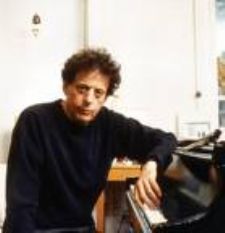|
Symphony
FROM THE NEW WORLD TO THE OLD WORLD
by Peter Lert
Saturday, June 14, 2025
Chamber
MC2 DUO RECITAL CLOSES 222'S SEASON
by Terry McNeill
Saturday, June 14, 2025
Choral and Vocal
CANTIAMO SONOMA'S LUSCIOUS A CAPELLA SINGING IN SEASON ENDING CONCERT
by Pamela Hicks Gailey
Sunday, June 8, 2025
Symphony
SRS SEASON ENDS WITH RESOUNDING TA-TA-TA-BANG
by Terry McNeill
Sunday, June 1, 2025
Symphony
YOUTHFUL VIRTUOSITY ON DISPLAY AT USO'S MAY CONCERTS
by Peter Lert
Saturday, May 17, 2025
Symphony
MYSTICAL PLANETS AND LIVELY GERSHWIN ORTIZ AT FINAL SRS CONCERT
by Peter Lert
Sunday, May 4, 2025
Symphony
VSO'S CONCERT MUSIC OF TIME, MUSIC OF PLACE
by Peter Lert
Sunday, April 27, 2025
VOCAL ELEGANCE AND FIRE AT THE 222'S RECITAL APRIL 26
by Pamela Hicks Gailey
Saturday, April 26, 2025
CANTIAMO SONOMA SINGS AN INSPIRED GOOD FRIDAY MOZART REQUIEM CONCERT
by Pamela Hicks Gailey
Friday, April 18, 2025
DRAMATIC SHOSTAKOVICH SYMPHONY CLOSES PHILHARMONIC'S 25TH SEASON
by Terry McNeill
Sunday, April 13, 2025
|
 |
 Philip Glass at his piano |
BEYOND THE SOPORIFIC
by Terry McNeill
Thursday, February 19, 2009
Reactions from listeners to the music of Philip Glass usually are of two types. One group flees quickly from the hall and concludes that Glass is a mere shadow of the greater minimalist composers Reich, Adams and Riley. Others, with more patience and curiosity, give the music time to unfold and, especially in Glass’s operas, uncover sonic gems.
In the Napa Opera House on Feb. 19, Glass played a 90-minute recital of his music at the piano. A full house of 500 greeted the composer, who announced the works from the stage. Beginning with “Mad Rush,” a 14-minute work from 1979 dedicated to the Dali Lama, it became quickly apparent that Glass is not a virtuoso pianist. The repetitive figures were seldom played evenly, especially in the right hand, and given that so much of his music is in the upper registers, he has a surprisingly pallid tonal palette. He does, however, know how to phrase his works with adroit care, and he moved easily to three of the “Metamorphosis” pieces from around 1980 that became part of the scores for the movies The Hours and The Thin Blue Line.
In these richly hued discourses, and in eight of the “Twenty Etudes for Piano” (four are still to be written), Glass captivated listeners with his convoluted and sonorous sonic fabric, all played with long stretches of full damper pedal, sporadic shift pedal and a rainbow of sound. He constantly used two pianistic tools: hand crossings and pedal point. There were also frequent deceptive cadences that tended to prolong the already lengthy exposition of the Etudes beyond (at least) my attention level. Several times Glass forgot where he was in a piece and wandered about until a phrase reoccurred that he could latch onto. These wanderings didn’t matter to the audience, as music with so much repetitive structure just rolls on without much need to change. I heard Keith Jarrett’s pianism and Glass’s own Satyagraha in the playing.
The concert closed with “A Night on the Balcony,” written in 1991 and inspired by Jean Genet’s play The Screens, a depiction of the French occupation of Algiers. Here the long lines were punctuated by sforzandos in the left hand and more melodic interest than the preceding pieces. I found the piece entrancing and not at all soporific.
The single encore was from the 1981 “Glassworks,” titled appropriately “Opening and Closing.” It was more of the warmly-shaped arpeggios and repeated chords in both hands, effective and kaleidoscopic.
The concert was far from the usual piano recital. It was not only memorable, but also, as the composer was the performer, instructive.
Santa Rosa music explorer Dr. Victor Spear contributed to this review.
|

